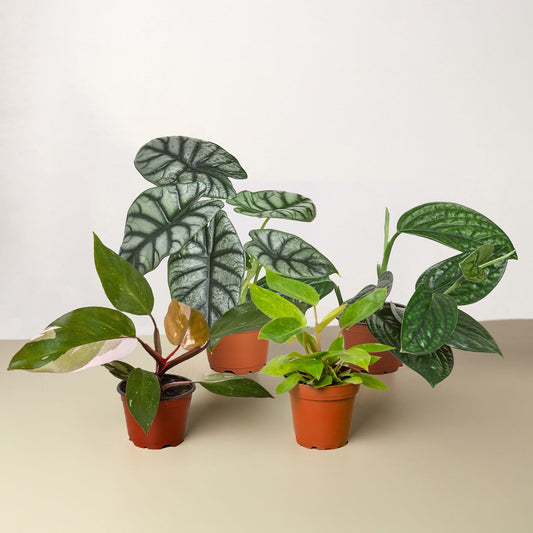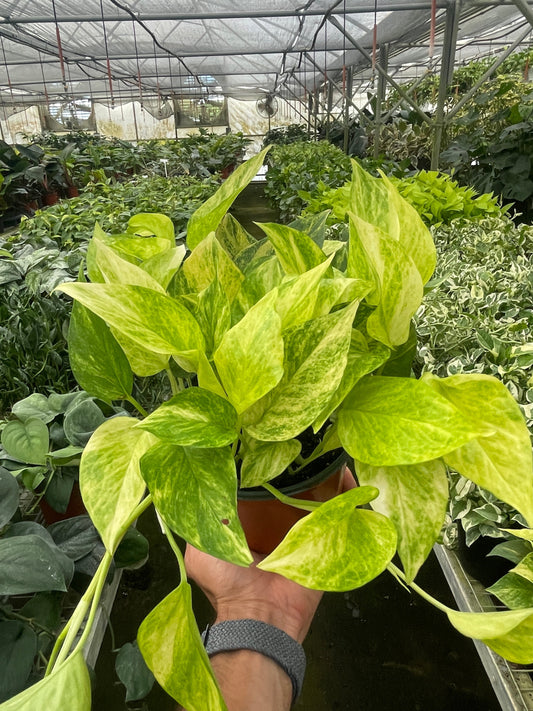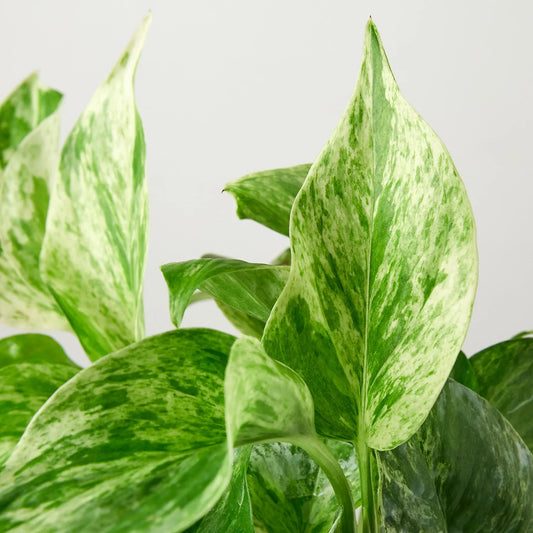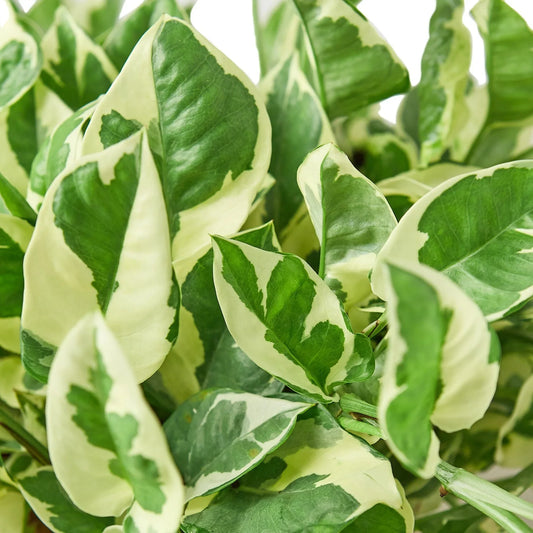The Ficus Alii Growth Stages: From Seed to Full-Grown
Cafe Planta Team
From Seed to Splendor: The Growth Journey of Ficus Alii
Houseplants can transform any living space, and the Ficus Alii is no exception. Known for its elegant, narrow leaves and graceful stature, this plant is a favorite among plant people. But how does it grow? What stages does it go through from a tiny seed to a full-grown, majestic plant gracing your home?
In this post, we're going to explore the fascinating growth stages of the Ficus Alii. We'll cover everything from planting the seed to nurturing a mature plant. Whether you're a budding plant parent or a seasoned green thumb, understanding these stages will help you care for your Ficus Alii effectively.
1. Germination: The Beginning of Life
Every plant's life starts with a seed, and the Ficus Alii is no different. Germination is the process where the seed awakens from its dormancy and begins to sprout. Imagine it as the plant's version of waking up after a good night's sleep. It's an exciting time, but also one that requires patience.
To kick off this stage, you'll need fresh Ficus Alii seeds, which can be a bit tricky to find. Once you've got them, soak the seeds in lukewarm water for about 24 hours. This helps soften the outer shell and encourages the seed to start its growth journey.
- Prepare a small pot with a well-draining soil mix. A mix of peat moss and perlite works well.
- Plant the seeds about an inch deep, covering them lightly with soil.
- Keep the soil consistently moist, but not waterlogged. Overwatering can be detrimental to the germination process.
- Place the pot in a warm area with indirect sunlight. Ficus Alii prefers warmth to kickstart its growth.
It can take a few weeks for the first signs of life to appear, so don't lose hope if you don't see immediate progress. Keep an eye on moisture levels and be patient. Before you know it, a tiny sprout will break through the soil, marking the end of germination and the beginning of the next stage.
2. Seedling Stage: Early Growth
Once the Ficus Alii has sprouted, it enters the seedling stage. This phase is crucial as the young plant starts developing its root system and the first set of leaves. It's like watching a child take their first steps—exciting and nerve-wracking at the same time!
This stage is all about providing the right conditions for growth. The young seedling needs:
- Light: Indirect sunlight is best. Too much direct sunlight can scorch the delicate leaves, while too little can stunt growth.
- Water: Keep the soil moist but avoid overwatering. Seedlings are particularly sensitive to root rot.
- Temperature: A warm environment, ideally between 70-75°F (21-24°C), is perfect for young Ficus Alii.
- Humidity: Higher humidity levels help. Consider placing a humidifier nearby or misting the plant regularly.
During this stage, you'll begin to see the leaves unfurl, and the plant will start to take on a more recognizable form. Continue to nurture it with care, and remember that patience is your best friend.
3. Juvenile Stage: Establishing Roots and Structure
As the Ficus Alii matures into its juvenile stage, it starts to develop a stronger root system and more leaves. This is when the plant begins to establish itself and requires a bit more attention from you.
At this point, consider transplanting the seedling into a larger pot. This gives the roots more space to grow and helps prevent the plant from becoming root-bound. When repotting, choose a container that's only slightly larger than the current one to avoid excess soil holding too much moisture.
Here are some tips to help your Ficus Alii thrive during its juvenile stage:
- Feeding: Start fertilizing with a balanced liquid fertilizer diluted to half strength every 4-6 weeks.
- Pruning: Trim any dead or yellowing leaves to encourage new growth and maintain the plant's health.
- Support: Consider staking the plant if it begins to lean, as it helps the stem grow straight and strong.
This stage is all about growth and establishing a solid foundation for the plant's future. Regular care and attention will ensure your Ficus Alii develops into a healthy young plant.
4. Adolescent Stage: Rapid Growth
As your Ficus Alii transitions into adolescence, you'll notice a significant growth spurt. This stage is characterized by rapid development of leaves and branches. It's like the teenage years for your plant, where it seems to grow overnight!
During this phase, the plant requires more nutrients and space. You might find yourself repotting again as the root system expands. Keep an eye on the plant's overall health and continue with regular pruning to maintain its shape.
Watering becomes even more important now. The plant will consume more water, so you may need to adjust the frequency. However, continue to avoid waterlogging the soil, as this can lead to root rot.
You may also want to rotate the plant occasionally to ensure even growth and prevent it from leaning towards the light source. Maintaining a consistent care routine will help your Ficus Alii flourish during this busy growth period.
5. Mature Stage: Steady Growth and Maintenance
Once your Ficus Alii reaches maturity, it will have developed a full, bushy appearance with a strong structure. This stage is less about rapid growth and more about maintaining the plant's health and appearance.
At this point, your Ficus Alii can thrive in a variety of indoor conditions, but it still needs consistent care:
- Watering: Water when the top inch of soil feels dry. The mature plant is less sensitive but still susceptible to overwatering.
- Fertilizing: Continue regular feeding during the growing season (spring and summer) and reduce in the fall and winter.
- Pruning: Trim back any overgrown branches to maintain the desired shape and promote new growth.
While the plant is more resilient at this stage, it's still important to watch for any signs of pest infestations or diseases. Regular check-ups will keep your Ficus Alii in top shape.
6. Reproduction: Creating New Life
While not every plant parent is interested in propagating their Ficus Alii, it's worth understanding how the process works. If you're up for the challenge, propagation can be a rewarding experience.
Ficus Alii can be propagated through stem cuttings. Here's a simple guide to get you started:
- Choose a healthy stem with at least two nodes and a few leaves.
- Cut the stem just below a node using a clean, sharp knife or scissors.
- Remove the lower leaves, leaving a couple at the top.
- Dip the cut end in rooting hormone to encourage root development.
- Plant the cutting in a small pot with well-draining soil and water lightly.
- Place the pot in a warm, humid area with indirect light.
With proper care, the cutting will develop roots and eventually grow into a new plant. It's a wonderful way to share your love for Ficus Alii with friends or expand your own collection.
7. Seasonal Care: Adapting to Changes
Like all plants, Ficus Alii experiences changes with the seasons. As a plant parent, adapting your care routine to these seasonal shifts is essential for the plant's well-being.
During the growing months of spring and summer, your Ficus Alii will be in its active growth phase. This is the time for regular watering, fertilizing, and perhaps even a second repotting if it outgrows its container.
As fall and winter approach, the plant enters a period of dormancy. Growth slows down, and the plant requires less water and nutrients. You might notice some leaf drop, which is normal during this time.
To support your Ficus Alii through the seasons:
- Reduce watering: Allow the soil to dry out more between waterings in the cooler months.
- Adjust lighting: With less natural light in winter, consider moving the plant closer to a window or supplementing with a grow light.
- Maintain humidity: Central heating can dry out the air, so keep humidity levels up with a humidifier or by misting the plant.
By adjusting your care routine with the seasons, you'll help your Ficus Alii thrive all year round.
8. Troubleshooting: Common Issues and Solutions
Even with the best care, your Ficus Alii may encounter some challenges. Knowing how to identify and address these issues will help keep your plant healthy and happy.
Common Problems:
- Yellowing Leaves: Often a sign of overwatering. Check the soil moisture and adjust your watering schedule accordingly.
- Brown Leaf Tips: Usually due to low humidity or underwatering. Increase humidity and ensure consistent watering.
- Pests: Look out for spider mites and mealybugs. Treat infestations with insecticidal soap or neem oil.
- Leaf Drop: Can result from sudden environmental changes or stress. Ensure stable conditions and avoid moving the plant frequently.
If you notice any of these issues, take a step back and assess your care routine. Sometimes a small adjustment can make a big difference.
Final Thoughts
The journey of growing a Ficus Alii from seed to full maturity is both rewarding and educational. With patience, care, and attention to detail, you'll nurture a beautiful plant that can enhance any living space with its elegance and charm.
At Cafe Planta, we're passionate about helping you care for your plants. If you have questions, feel free to email us or send a DM on Instagram. Whether you're a seasoned plant parent or just starting out, we're here to support your plant journey and help you create a beautiful, thriving collection at home.



















